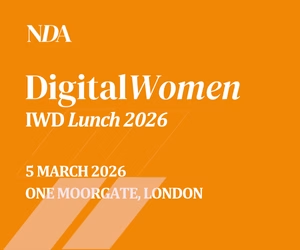By Ben Williams, Founder and Managing Director, Kiln
Spotify’s recent annual results showed that – despite the recent layoffs affecting the technology sector – digital audio is in rude health with a whopping 20% growth in monthly active users and ad-supported revenue up year on year to just shy of €1.5Bn.
At Kiln, we’ve been working across digital audio since our launch in 2019, initially working with start-ups in this space and more recently with Targetspot, a digital audio ad network acquired by Azerion in late 2022. The sector has been growing rapidly over the past few years, driven by a combination of factors including the increasing popularity of podcasting, which has seen a 43% increase in spend according to the IAB. This has been driven by the growing variety and availability of high-quality audio content, alongside the adoption of in-home smart speakers, making it simpler for people to choose what and when they listen to audio content at home.
We’re also witnessing rapid growth in digital audio advertising, with companies such as Targetspot and Spotify leading the way in this space. Given its power to connect emotionally with listeners, advertisers are increasingly recognizing the value of digital audio as a way to reach engaged audiences, and are investing more of their media spend as a result.
Technological advancements are also making a significant impact on this growth with increased availability of high-quality audio hardware and software, lowering the barriers to entry to produce and consume digital audio content, and the growth of AI-powered platforms such as Podocorn which enables content creators to reach and engage with their audiences.
As we look ahead to 2023, it is clear that the digital audio sector will continue to grow and evolve, driven by these and other factors. With continued investment and innovation, the sector is poised for continued success and growth in the coming years.
The streaming wars
Spotify’s recent layoffs reflect the challenges facing the technology sector, where operating expenses have been outpacing revenue growth. However, the company’s ad business is performing well, with revenue growing 14% year on year. This growth is driven by innovations in proprietary ad formats and the continued popularity of podcasting. Podcasting is of strategic interest to Spotify as it offers simpler commercial relationships compared to the record labels, making it a valuable area of focus for the company. Despite the layoffs, the strong performance of the ad business and the continued growth of podcasting suggest that Spotify is well-positioned for success in the future.
Programmatic is under-indexed
The digital audio industry has lagged behind other digital media formats in terms of programmatic spending, with only 20% of spending coming through programmatic channels. However, this is expected to change as publishers and networks invest in data collection and analysis, and provide addressability and hearability data to advertisers. This will enable advertisers to better target their audience and measure campaign effectiveness, leading to increased investment in digital audio advertising and driving growth in the sector. According to eMarketer, programmatic spending in the US is expected to reach $1.8 billion in 2024, and it is likely that this trend will continue in other regions as well.
Start-up innovation
Odeeo, a start-up backed by Play Ventures, has made a big move in the race for audio advertising dominance in the mobile gaming sector. They announced the first in-game audio advertising adapter for MAX, AppLovin’s in-app mediation platform. With over 3 billion potential audience members in the mobile gaming category, it’s no surprise that this sector is attracting attention from both brand and performance advertisers. Odeeo’s innovative solution has the potential to be a game-changer in this growing market.
The digital audio industry has experienced significant growth in recent years, driven by the popularity of podcasting, the continued media investment into a brand-safe format, and technological advancements driven across the start-up sector. With continued investment and innovation, the sector is poised for continued success and growth in the coming years. The digital audio industry has lagged behind other digital media formats in terms of programmatic spend, but this is expected to change as publishers update their tech stacks and make verifiable data more available to advertisers. The digital audio space also offers opportunities for start-ups to bring new solutions to market, as evidenced by Odeeo’s in-game audio advertising adapter for the mobile gaming sector. As the digital audio landscape continues to evolve, it will be exciting to see how these trends play out and shape the industry in the future.







